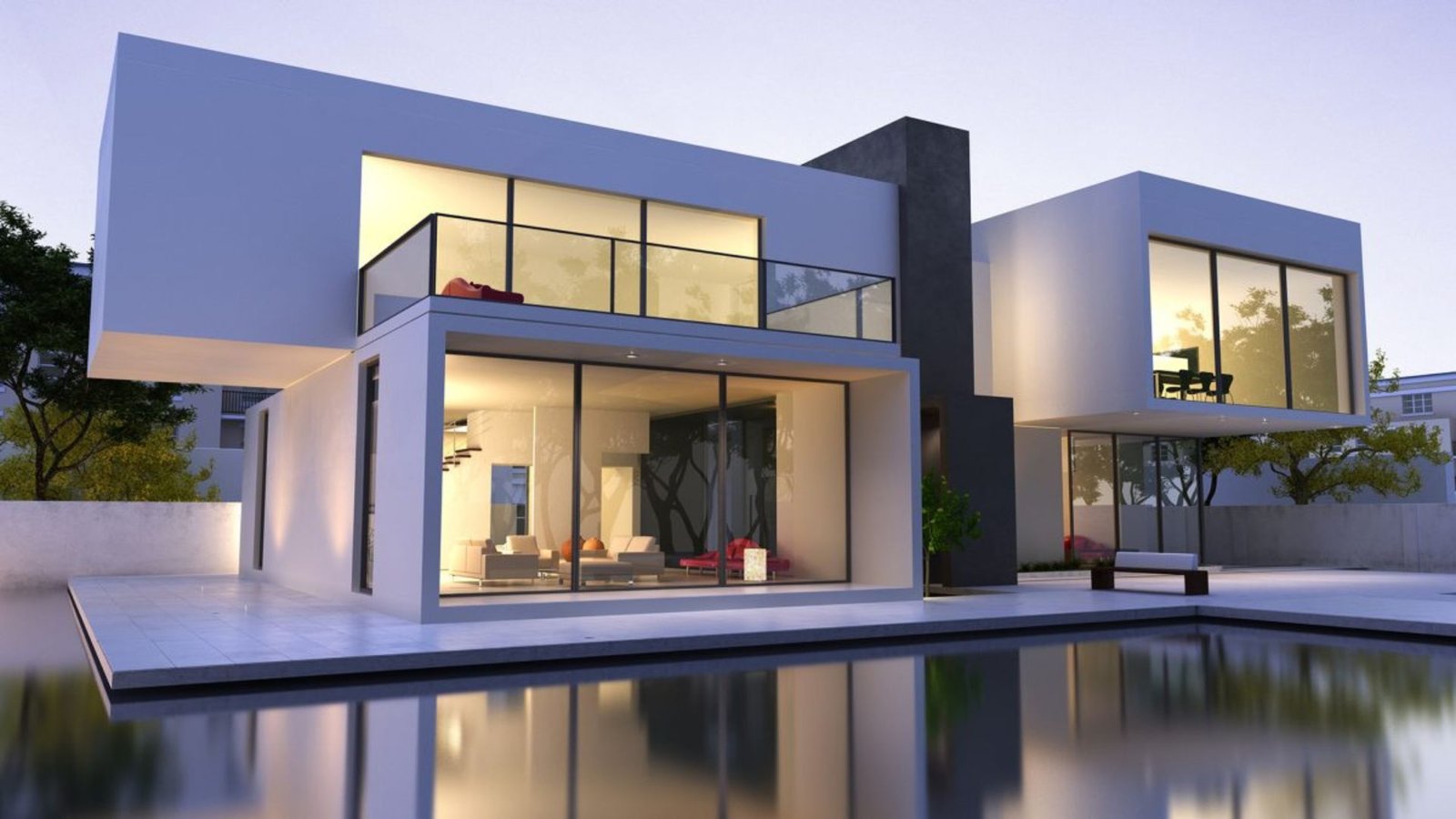How to Achieve a Modern Architectural Aesthetic
Modern architecture is all about clean lines, minimalism, and functionality. It is a design style that focuses on simplicity while also incorporating innovative elements. If you want to achieve a modern architectural aesthetic, there are several key principles to follow. In this blog, we will explore the main features of modern architecture and how you can bring this look into your space.

MyAromatica Architectural Insights
MyAromatica.com explores architecture, offering insights and inspiration across various categories. The site also delves into topics like aromatherapy and online gaming. For those seeking alternative entertainment, explore live dealer casinos.
What Defines Modern Architecture?
Modern architecture is often defined by its simplicity, open spaces, and use of natural materials. This style emerged in the early 20th century and has continued to evolve. Today, it is known for its sleek, uncluttered look, and focus on functionality.
To achieve a modern architectural aesthetic, it’s important to focus on these core features. Modern buildings typically avoid unnecessary decoration and focus on clean, geometric shapes. Here are some key strategies to help you bring this style into your home or building design.
Enhance Your Wellness with Aromatica
Aromatica provides high-quality essential oils and wellness products to help you live a balanced life. For some added excitement, visit the best online casino website and try your luck today.
1. Emphasize Clean Lines and Simple Shapes
One of the most important elements of modern architecture is the use of clean lines and simple shapes. Modern buildings often feature straight lines, flat roofs, and open floor plans. When designing or renovating a space, focus on keeping the lines of the building smooth and uncluttered.
You can achieve this by avoiding excessive decoration or ornate details. Instead, use basic geometric forms, such as squares and rectangles, to create a streamlined look. This will give your space a sleek, modern feel that is both stylish and functional.
2. Use Natural Materials
Another important aspect of modern architecture is the use of natural materials. Modern architects often incorporate materials like wood, glass, steel, and concrete into their designs. These materials not only look beautiful but also add to the sense of simplicity and connection to nature.
For example, you can use exposed concrete for walls or floors to create a raw, industrial look. Large glass windows can allow natural light to flood into your space, making it feel bright and airy. Adding wood accents, such as wooden floors or cabinets, can bring warmth and texture to the space, balancing the coolness of steel and concrete.
3. Focus on Open Spaces
Modern architecture often emphasizes open, flexible spaces. This means fewer walls and barriers between rooms, creating a sense of flow throughout the building. Open floor plans are a hallmark of modern design and can make your space feel more spacious and inviting.
To achieve this, consider removing unnecessary walls or partitions to create an open layout. By doing this, you can allow natural light to flow more freely, making the space feel larger and more connected.
Explore Aromatherapy and Skincare
Myaromatica.com offers a range of aromatherapy and natural skincare products. For a different kind of online experience, explore https://www.jokacasino.me/online-roulette. Discover both wellness products and online gaming options.
4. Architectural Design and Digital Diversions
MyAromatica.com shares insights into architecture and design. Alongside exploring innovative designs, many seek digital entertainment options. For those interested in exploring online platforms, you can find more at https://www.kingjohnnie.me/en. Balancing an appreciation for design with online leisure can offer a diverse range of experiences.
5. Incorporate Minimalist Design
Minimalism is at the heart of modern architecture. Achieving a modern architectural aesthetic requires removing clutter and keeping the design as simple as possible. This means choosing furniture, décor, and finishes that are sleek and minimal.
For instance, select furniture with clean lines and simple shapes. Avoid overly ornate or detailed pieces, and instead opt for functional, well-designed items. This will create a cohesive look that reflects the simplicity of modern architecture.
6. Integrate Technology
Modern architecture is known for its embrace of technology. Smart homes, energy-efficient appliances, and advanced lighting systems are common features in modern buildings. To achieve a modern architectural aesthetic, consider integrating technology that enhances both the look and functionality of your space.
Smart thermostats, lighting systems, and security features can all add convenience to your home while maintaining a sleek, modern appearance. These technologies not only improve your quality of life but also help create a seamless, futuristic aesthetic.
Découvrez l’Art du Jeu avec la Roulette en Ligne
Les amateurs de sensations et de stratégie apprécieront la richesse de https://www.casinolariviera.info/fr/roulette-en-ligne. Cette plateforme propose une expérience de roulette fluide, réaliste et adaptée à tous les niveaux de joueurs. Avec son interface élégante et ses options immersives, elle offre un équilibre parfait entre hasard et maîtrise. Un lieu idéal pour explorer l’univers captivant du jeu en ligne.
7. Play with Light and Space
Lighting plays a big role in modern architecture. Large windows, open spaces, and natural light are key features of this design style. To achieve a modern architectural aesthetic, focus on allowing as much natural light into the space as possible.
You can do this by using floor-to-ceiling windows or sliding glass doors to bring in sunlight. In areas where natural light is limited, consider using recessed lighting or minimalist light fixtures to create a clean, bright look. Lighting can help enhance the openness of the space and highlight the simplicity of modern design.
8. Incorporate Neutral Colors
When it comes to color schemes, modern architecture often relies on neutral tones. White, gray, black, and earth tones are commonly used in modern design. These colors create a calm, sophisticated look and allow the materials and shapes of the building to stand out.
To achieve a modern architectural aesthetic, stick to a neutral color palette for your walls, floors, and furniture. You can add pops of color through artwork or small décor items, but the overall look should remain clean and simple.
9. Maximize Functionality
Finally, one of the key principles of modern architecture is functionality. Every design element should serve a purpose, and unnecessary features should be avoided. This means that the layout, furniture, and décor should all be practical and useful.
For example, built-in storage solutions can help keep your space organized while maintaining a minimalist look. Multi-functional furniture, such as a sofa that doubles as a bed, can also add to the functionality of the space without sacrificing style.
Explore Natural Wellness with My Aromatica
My Aromatica offers a wide range of natural wellness products to help you embrace a healthier lifestyle. Discover premium aromatherapy solutions crafted with care and sustainability in mind. For a different kind of thrill, check out https://www.stellarspins.fun/en/online-roulette.
Blending Modern Design with Personal Comfort
Achieving a modern architectural aesthetic involves clean lines, open spaces, and thoughtful integration of natural elements like aromatic plants and essential oils. These elements create a calming environment that enhances both style and well-being. To complement your modern lifestyle, unwind with a bit of excitement by trying https://www.stellarspins.fun/en/online-baccarat. It’s a perfect way to balance sophistication with leisure.
Relaxation Through Scents and Entertainment
MyAromatica.com focuses on the power of natural aromas, wellness products, and relaxation techniques that enhance everyday life. After creating a peaceful atmosphere with soothing scents, many users like to unwind further with online entertainment at stellarspins Online Casino. The platform offers exciting games and rewarding experiences for a touch of fun during downtime. Blending aromatherapy with enjoyable leisure activities promotes balance and relaxation in every moment.
Conclusion
In conclusion, achieving a modern architectural aesthetic is all about simplicity, functionality, and clean design. By focusing on open spaces, natural materials, and minimalism, you can create a space that feels modern, elegant, and timeless. Incorporating technology, playing with light, and sticking to neutral colors will further enhance the modern feel. Whether you are building a new home or renovating an existing space, these tips can help you achieve the modern architectural aesthetic you desire.



